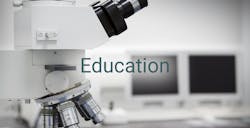Better questions, better answers: reporting vs. analytics
What are the questions about performance, risk, and opportunity that leaders of today’s modern medical laboratories are asking? What are the questions they could be asking, or don’t even know they should be asking?
Reporting is the static assessment of performance, from which leaders must extrapolate conclusions about risk and opportunity. Data analytics, on the other hand, enables users to interact with information dynamically. It capitalizes on real-time analytics and data warehousing technologies to allow querying of huge sets of data from multiple sources, inviting lab leaders to ask more sophisticated questions and get fuller answers than they have with reporting. Analytics can also reveal relationships between various data, generating smarter, more informed questions and prompting smarter, more informed action.
Reporting
Reporting provides regular information on measures that lab leaders have decided on in advance. It is a useful tool for assessing organizational performance according to pre-set indicators; it helps leadership set goals and holds managers accountable. Though narrowly focused, LIS-generated reporting can provide a static snapshot of how well the lab is functioning in particular areas.
Analytics
With analytics, the quality and depth of the questions labs can pose are limited only by the user. Most analytics platforms reveal extremely fine-grained detail from enormous troves of data, which the user has the ability to interact with in depth. Paired with the users’ expertise, analytics can convert educated guesswork into informed action.
Here are a few scenarios where reporting may indicate a change, but where analytics can quiet the noise of competing explanations and get to its root causes.
Managing customer interactions
Through reporting or a Customer Relations Management (CRM) system, you may notice a significant decrease in one physician/customer’s orders from one quarter to the next. However, you’re left with a list of possible explanations to consider—a report that will take time to investigate and assess.
Analytics, on the other hand, allows you to drill down further into existing data from various data sources in real time. Using an analytics solution, you can test logical theories and correlations, including: Is the decrease tied to a specific timeframe? A certain population of tests? Is the customer reacting to some broader change? Perhaps you can identify tests/services that can also be provided to the customer?
If the data reveals that the decrease occurred during a specific timeframe, you may learn that several physicians have simply been on vacation—and no further action is necessary. If the decrease is related to one test, you’ll have to dig deeper; for example, has there been a change in diagnostic protocol? If the decrease is due to a broader change in the customer’s operations or needs, the earlier you know about it the better. Ask yourself: Has the customer started a new relationship with a competitor? Perhaps there was a turnaround time issue that caused customer dissatisfaction? Whatever the answer(s), analytics leads you to a specific course of action.
In this scenario, analytics helps get to the bottom of what’s already happened. An advanced analytics program can also work predictively, issuing an alert the moment a customer’s ordering pattern decreases unexpectedly, for instance. This is just one of the many factors that help analytics predict the potential loss of a customer, another crucial business function. After all, when you need information most is when things may be going wrong, but you don’t know about it.
Defining competitive advantages
Labs can deepen their relationships with customers using analytics to produce useful, actionable insights about those customers’ practices. These insights may be shared informally or framed as specific recommendations, but in either case they can potentially help customers refine their ordering, improve staffing, or perhaps even improve health outcomes and efficiency. Using analytics, labs can draw on the immense diversity and amount of information for their customers’ benefit. Doing so produces value for the customer, which in turn establishes a competitive advantage over labs that aren’t as transparent and aren’t producing the same caliber of information for their stakeholders.
Improving healthcare quality
Industries like transportation, banking, and retail use business analytics to guide strategic decisions from site location to customer retention. Forward-thinking providers and payers across the health system also recognize the opportunities that advanced analytics affords them.
To appeal to providers and payers, clinical lab leaders need to draw on their deep knowledge to help achieve smarter, more effective care. Labs can use analytics not only to identify risks and opportunities in a business sense, but also to improve quality of healthcare:
- Labs can compare patient medical records with LIS data to notify physicians and staff when high-risk patients have missed necessary scheduled testing. This could have the greatest impact for patients with chronic diseases like diabetes, for whom ongoing testing is a critical factor in managing the disease.
- Using analytics, labs can perform a mapping analysis, which connects patient location data with positive lab test results to identify geographic concentrations of a specific disease or health concern. In the case of something like lead poisoning, that information can be transmitted to public health officials who can act to prevent additional exposure.
Summary
Tracking performance through reporting is a basic obligation for responsible lab management. But creative, visionary leadership requires that lab leaders ask better questions, reach better conclusions, and transform those conclusions into action to achieve better results.
The clinical lab has always had the breadth of data to contribute to that process. With analytics, lab leaders now have the depth and control to effect positive change as well.

